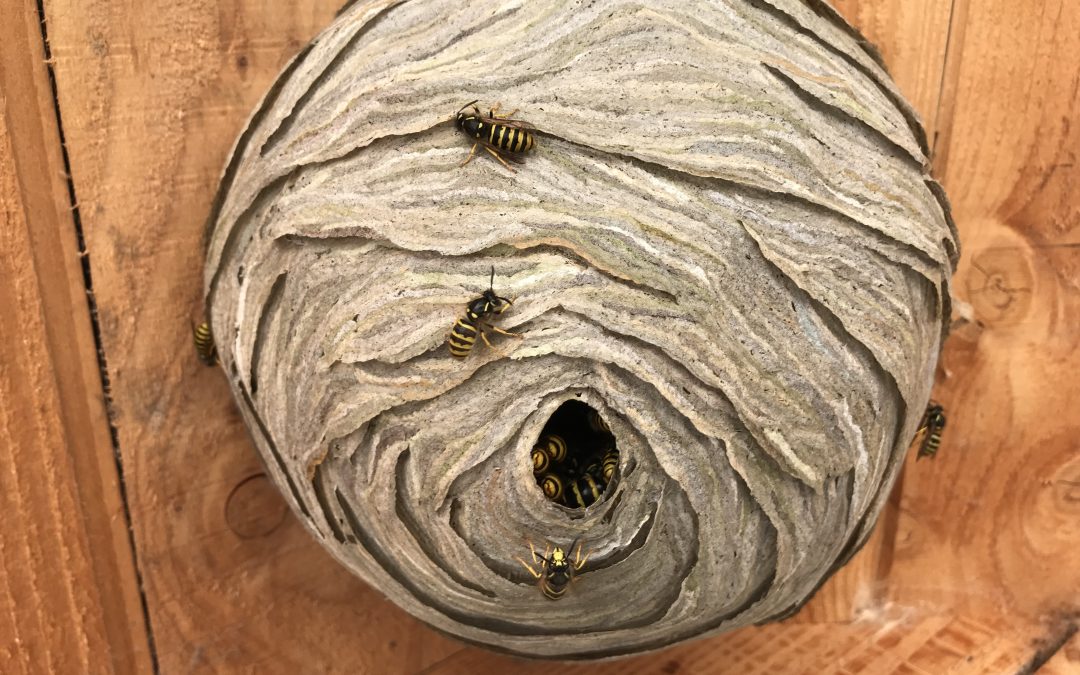Bees have recently been considered as the most important living beings in the world, according to Earthwatch Institute. They are the Earth’s most important pollinators, and they play a crucial part in maintaining the planet’s food chain.
It is extremely important to protect them this is why MJR pest control will not treat honey bees. A sting from a bee or wasp can be painful but is very unlikely to be dangerous. A bee or wasp sting has venom that can cause a severe allergic reaction in a small number of humans. If you do get stung please look out for the following symptoms
Skin rashes and itching and hives, swelling of the lips, tongue or throat, shortness of breath, trouble breathing, wheezing, dizziness and/or fainting, stomach pain, vomiting or diarrhea, these are signs of anaphylaxis and you should seek medical attention immediately.
If you find your home or your backyard has been infested by bees or wasps, here’s what you should do:
Identify the kind of wasp
Before getting rid of the bees, you should know the species you’re dealing with. Bees and wasps often look the same, but the damage or threat they bring varies according to their kind. The treatment for each sting also differs.
Here are the usual types of bees and wasps you’ll encounter:
- Ground bee – Ground bees are not harmful and never aggressive. Only female ground bees sting, and they will only sting when feeling threatened. They do not form hives but are often found nesting underground. The entrance to their nests is usually patches of bare soil.
- Honey bee – The Honey be is a small bee with a barrel shaped body and a fury appearance, they usually live in trees or hollow spaces and their nest have a unique honey comb look and is a white or yellow colour.
- Masonary bee – Masonry bees have a similar appearance to honey bees and get their name from the fact that they use mud, clay and other building materials in the construction of their nests.
- Bumble Bee – There are over 250 species of bumble bee (genus Bombus). They have round bodies and a fuzzy, hairy appearance, they usually have a white and buff colour on their tails and live in very small colonies. There life span is around 28 days.
- Yellowjacket – Yellowjackets are not bees, they are wasps. They are sometimes mistaken for bees because of their looks and their sting. The attacks of yellowjackets can be deadly for people who are allergic to their stings. They can also bite their target first before they sting.
- Hornet – Hornet is the largest of the eusocial wasps, and they look similar to the yellowjacket. Their stings are considered more dangerous than those of bees. They usually build their paper nests in the shape of a teardrop.
Carefully remove the hive from your home
*MJR pest control do not recommended or endorse removal of any type of bee or wasp nest without proper training and equipemnt
If you find the hive inside your home, never block their entry point. Blocking will only encourage the bees to find another exit or entry point around your home. Here’s what you should do:
Step 1: Make sure you are physically protected. Wear bulky protective clothing before getting near the hive.
Step 2: Spray the hive with pesticide after sunset. This will lessen the possibility of getting stung.
Step 3: Check by morning if there’s any activity happening inside the hive. Spray pesticide again at dusk time, if necessary.
Step 4: When no other activities are observed, and you’re sure the bees are dead, you can remove the nest by placing a strong bag over the nest and removing it from it purchase. Although most species of bees will only use a nest for one season.
The same steps should be applied if you find the hive on the ground of your backyard. Here’s what you should do:
- Aim the chemical at the hive entrance for it to reach the bees’ nesting area.
- Observe your surrounding. Bees who will survive the chemical will always look for a new nesting area.
Here’s what you shouldn’t do:
- Don’t pour gasoline or other generic chemicals into their nest. Doing so can harm your soil, plants, and other animals. Use a chemical spray specifically meant for ground bees.
Conclusion
There’s a fine line between protecting the environment and protecting your family and home. In case you find the hive inside your walls or deep underground, it is better to seek the help of professional pest control. They are more knowledgeable about how to deal with these complicated situations.
For safe and reliable pest control in Leeds, contact us at MJR Pest Control. We deliver extensive pest removal solutions to any residents, industrial, and commercial clients in Leeds and Wakefield.


Recent Comments